

FANTASTIC NEGRITO
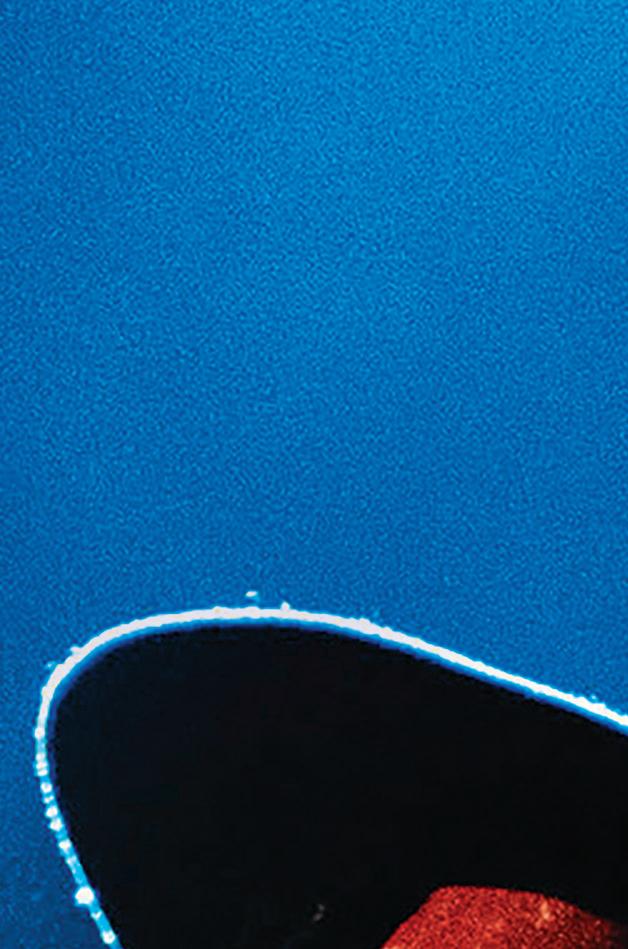




TALKS MUSIC, MEMORY AND MEANING

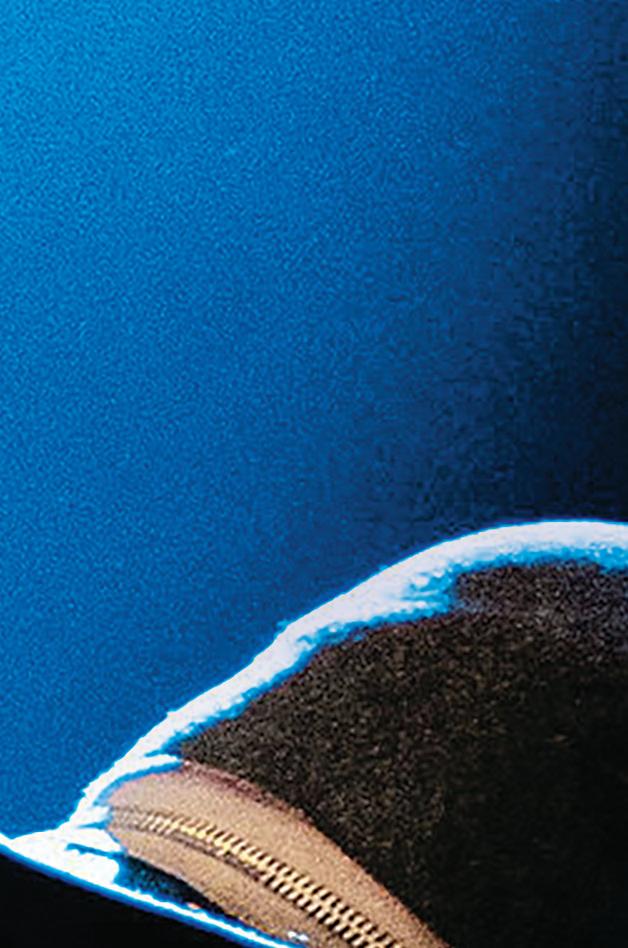





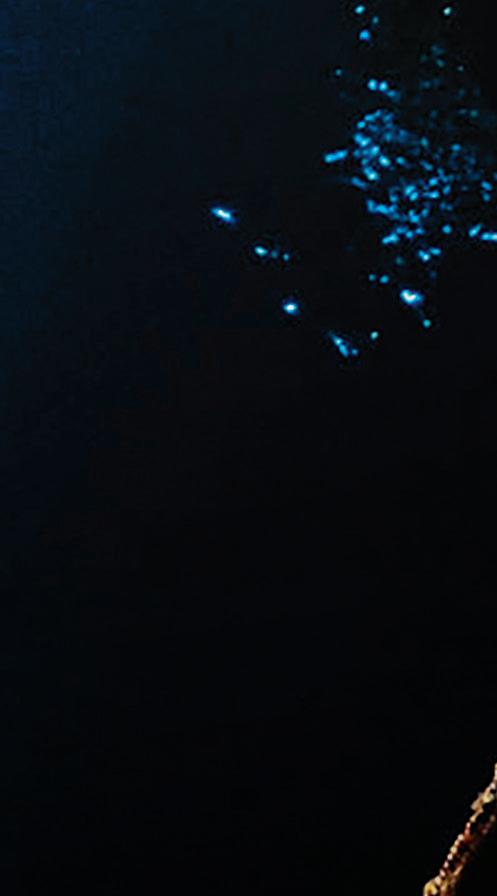

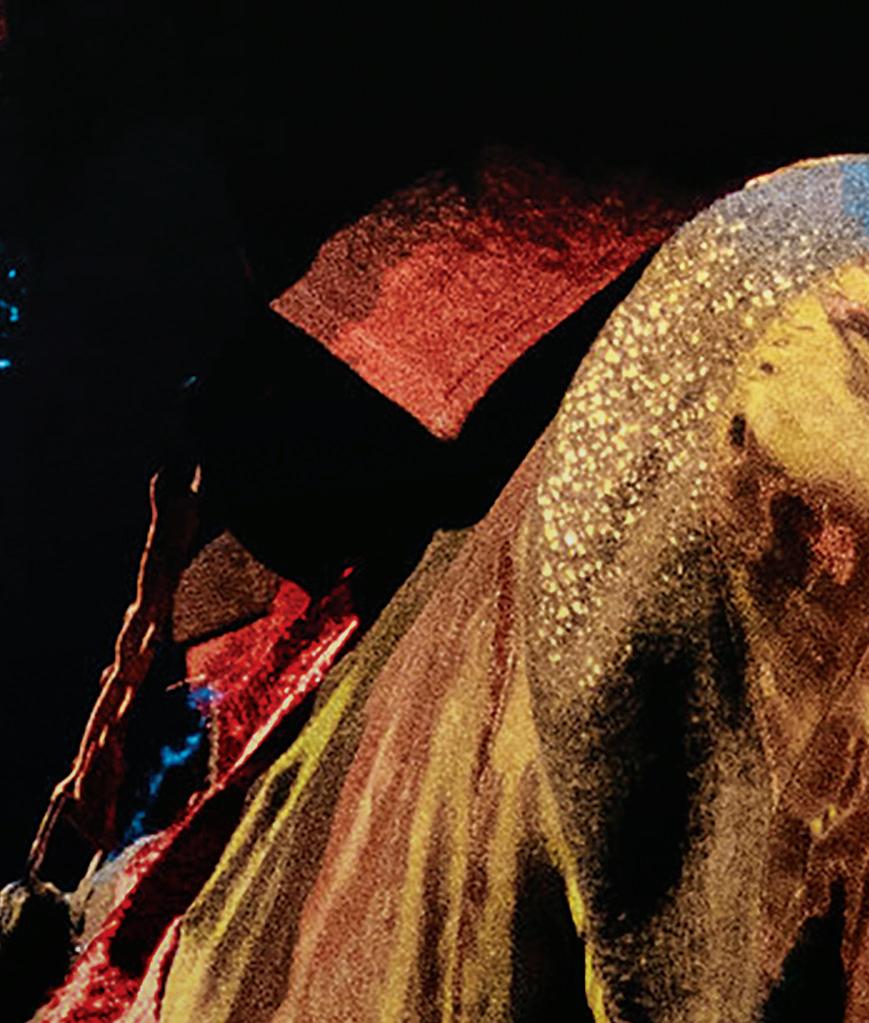



FANTASTIC NEGRITO





TALKS MUSIC, MEMORY AND MEANING































Karen Klaber
EDITOR
Samantha Campos
COPY
Suzanne Michel
CONTRIBUTORS
Jessica Blough
Jeffrey Edalatpour
Lou Fancher
Janis Hashe
Brooke Mohiuddin j. poet
PRODUCTION
Zk Bradley
CREATIVE
PRODUCTION MANAGER
Deb Fisher
SENIOR DESIGNER
Jackie Mujica
GRAPHIC DESIGNER
Elena Razgonov
EDITORIAL DESIGNER
Lisa Santos
ADVERTISING
Danielle McCoy
Ben Grambergu
Mercedes Murolo
Lynda Rael
Sharon Zuberbier
CEO/EXECUTIVE EDITOR
Dan Pulcrano
DIRECTOR OF CREATIVE
Phaedra Strecher Heinen ADVERTISING
Cindy Couling






Babies should have their first dental visit by age 1 or within 6 months of the first tooth!



Because there’s always Vegas, baby. Pictured: the enticing doors to the Golden Tiki.



We journey near and far this issue, with a focus on travel and entertainment. Summer brings greater possibility of both, so we aim to provide options and inspirations for readers. We also explore the preservation of local music, activism, history and artistic heritage—individually and collectively.
Our cover star is three-time Grammy Award-winning Oakland musician Fantastic Negrito. Born Xavier Amin Dphrepaulezz, he shares a fascinating and vulnerable personal story of contending with his complicated family history, which inspired his latest album, Son of A Broken Man.
We also talk to Clayton Call, a local photographer who captured musicians on film long before turning pro. He began by
Jessica Blough is a multimedia journalist based in San Francisco with bylines in SFGate, Mission Local and Alta Journal. She’s getting her graduate degree in journalism at UC Berkeley.
Je rey Edalatpour writes about arts, food and culture for SF Weekly, Metro Silicon Valley, East Bay Express and KQED Arts.
taking photos at concerts in the 1970s and eventually started shooting for local and national magazines. Woodstock? Yeah, he was there. The longtime Berkeley resident tells us about his life in music.
Continuing with artistic legacy, we detail the story behind an El Cerrito building that houses decades of music history. After the deaths of its original collaborators, Chris Strachwitz and Les Blank, three organizations successfully raised funds to purchase the historic location, with plans to preserve legacies and expand the space for educational opportunities, artist residencies and live events.
Elsewhere in this issue, we share production particulars on Oakland’s West Edge Opera premiere of Dolores, a new opera about labor leader and
Lou Fancher has been published in Diablo Magazine, Oakland Tribune, InDance, San Francisco Classical Voice, SF Weekly, WIRED.com and elsewhere.
Janis Hashe regularly contributes to the East Bay Express and other Bay Area publications.











Travel, art and legacy in the East Bay and beyond legacy

civil rights legend Dolores Huerta. Focusing on her experiences around the assassination of Robert Kennedy in 1968, Dolores highlights Huerta’s commitment to fighting for justice.
We also o er o -the-beaten-path—i.e., o the Strip, thankfully—activities for voyages to Las Vegas. And we heed the siren call of Monterey, exploring the city’s bounty of seaside delights. A foodieinspired day trip to Mill Valley yields artful culture and baked goods (our favorite combo). And nearby, Moraga o ers summer concerts aplenty.
This issue’s mosaic of stories showcase how the East Bay continues to thrive as a hub for artistic expression, cultural memory and community resilience. No luggage required.
Samantha Campos, Editor
Brooke Mohiuddin is a writer and photographer for portraits, events and concerts in the Bay Area. She is currently a high school junior. j. poet has been writing about music for most of his adult life and has interviewed a wide spectrum of artists, including Leonard Cohen, Merle Haggard and Godzilla.








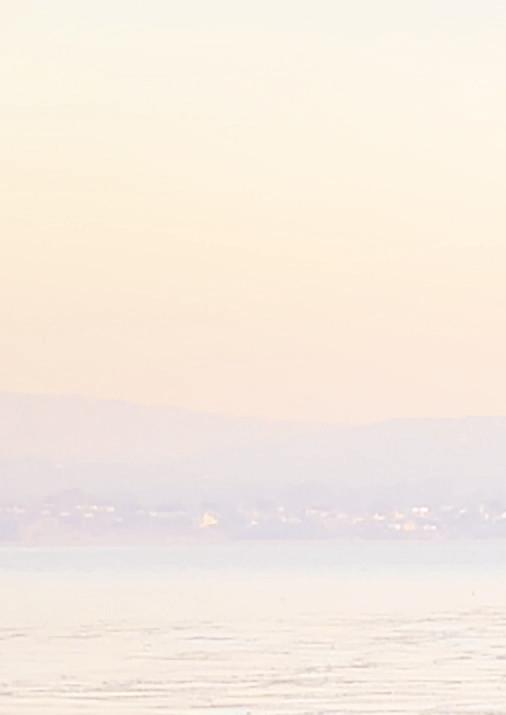





BY Lou Fancher


While dreaming of travel and craving respite from summer season busyness, I received a fortuitous email in May that planted a seedlike idea. Short on time for two weeks abroad or a similar stint at a destination in the U.S., could a three-day, two-night beach excursion to a location within a two-hour drive of the East Bay su ce?
Enter Monterey and the unsolicited message from folks at the newly reopened (as of August 2024) Monterey Beach Hotel. The Marriott Tribute Portfolio property originally built in 1967 sits on more than 600 linear feet of shoreline. Since it’s the Monterey peninsula’s only beachfront hotel, succumbing to an invitation for a visit was irresistible.
Research showed the 192-room building’s unique setting o ered immediate, commute-free access to sand and sea. Realizing the family-friendly hotel could also serve as an ideal hub for couples seeking romantic jaunts—and learning the re-model features Los Angeles-based Indidesign’s elegant but unpretentious furnishings and mixedmedia artwork from local artisans—came as value-added bonus attractions.
All of which led to a 110-mile journey southward in early June to check out the hotel’s new look, amenities and management. Having arrived with thoughts of spending one night in a second lodging establishment—there are dozens of desirable alternatives—the hotel’s setting, an ocean view king suite and generous amenities rapidly erased those thoughts. With the hotel as ground zero, my stay included use of a well-outfitted fitness studio, heated outdoor pool, free two-hour e-bike rentals and more.
There is no room service. But the onsite Lantern Room restaurant boasted sweeping, panoramic views of the Pacific and o ered seasonal breakfast and dinner menus. A lobby lounge with a curated wine list showcased local varietals and craft beers. The Tidewater, a sprawling seaside deck with fire pits, had guests of all ages and backgrounds gathering to enjoy cocktails, pop-up clam bakes, s’moresmaking, corn husk toss competitions and inevitably, ocean gazing.


The first morning, with home base firmly established and a hike on Monterey State Beach leaving sand wedged between every toe, it was time to peel away from the hotel. From the sofa placed in front of the suite’s wall-to-wall window, watching the blue-green waves roll in was mesmerizing. The rooms come with free wi-fi and big screen televisions. But why bother when Mother Nature provides constant demonstration of coastal splendor, strength and spontaneity? From sunrise to sunset, the view was dramatic, gorgeous and unforgettable.
The same was true of my first outing: a trip to the vaunted Monterey Bay Aquarium. Among the highlights were eye-catching leopard sharks, tiny northern anchovy and giant sea bass that can weigh up to 500 pounds, all meandering or darting through the kelp forest’s towering fronds. In the Splash Zone, African penguins busily groomed (and one awkward fellow attempted to mate, prompting a nearby visitor to sweat and begin explaining how life begins to his inquisitive child). In a separate tank,
energetic schools of orange and black clownfish were offset by stunning regal blue tang fish.
The Open Sea exhibit provided the greatest surprises and long-lasting memories with its marvelous purplestriped jellies that pulse with invisible muscles to magically move, brilliant orange sea nettles trailing sinuous (and lethal) tentacles, slow-moving gigantic green turtles, zippy scalloped hammerhead sharks, silver rivers of Pacific sardines and yellowfish tuna using binocular vision. Display labels report fascinating facts about other sea life zooming through the floor-to-ceiling tank’s filtered light. The experience was spectacular and immersive.
In other areas, sea otters frolicked, swam effortlessly or floated on their backs like swimmers resting between sprints. High activity and excitement were the primary themes throughout the aquarium. Welcome features—when the sound of people talking or the visual stimulus threatened to become overwhelming—were options for momentary escape: outdoor viewing »

Somebody didn't want these things, but they're still good. We saved them from being wasted. Now we're selling them in our 3-acre store in Berkeley We're well organized Come
a look. Bring a truck.





What are my options for senior living? What if my parents have different needs? What if those needs change?
At Belmont Village, we know that each family is unique and that choosing the right senior living option matters. Our experienced advisors will help you ask the questions you need to get the answers your family deserves.
We’re here to help. Just ask.
BelmontVillage.com/AskBayArea 510-722-5731





viewing stations, guided tours, feeding presentations, auditorium programs and an onsite café.
The drive along the coast to my second destination, the Point Pines Lighthouse, was perfect for picnicking. A bike/walk path with numerous benches winds between the road and shore. Parking outside the downtown core is mostly free, and the views of the ocean breaking against monumental rock formations were unsurpassable. Dinner leftovers from the Lantern Room made for upscale lunch fare—baked lasagna rolls oozing with rich béchamel and spicy Italian sausage, roasted Mary’s chicken breast with English pea and barley risotto, seasonal fruit cups, and delicious, crusty Ad Astra sourdough bread.
The meal consumed, the Point Pinos Lighthouse was next on the agenda. Point Pinos was established in 1855 and is the oldest continuously operating lighthouse on the West Coast. Inside, visitors learn about the Fresnel lens manufactured in Paris, the impact of earthquakes and technical advancements such as electricity, radio, satellites and more. Informed and enthusiastic docents tell stories of lightkeepers who lived and served in Point Pinos in rooms displaying various artifacts. Tight, spiral stairways allow people to climb up to the (very tiny) top floor.
back-nine holes of the Pacific Grove Golf
Links, a public 18-hole golf course owned by the City of Pacific Grove. Picturesque, with windswept dunes and stunning ocean views, the course is made tricky due to shifting marine winds and fast-moving greens. Time did not allow a day on the links. Only the possibility of future return to work on my (embarrassing) handicap was comforting.
Meanwhile, the area’s great restaurants beckoned, among them, Red House Cafe, located in a historic (red) Victorian house in Pacific Grove’s downtown.
Offering New American cuisine made with fresh, seasonal ingredients and known by the locals for its excellent seafood, the establishment features fascinating history and glowing reviews.
Back in Monterey, Alejandro’s pairs upscale Mexican cuisine with California vinos from Alta and Baja, signature tequilas, mezcals, cócteles and more. A manager says the most popular dishes include bone marrow, among others, the barbacoa “osso buco” and the barrio and bone broth tacos. Seating at tables or in one of the curvaceous booths carved into side walls makes a visit either communal or cozy.
rewarding plating and diverse cooking modalities are on display during the restaurant’s happy hour and dinner service.
Of course, the three-day trip to the Monterey Bay region hardly tapped the area’s plentiful opportunities for dining, shopping, indoor and outdoor activities, and visiting other lodgings. Activities on the list for a return are Monterey Glass Works, Pacific Grove Art Center, Monterey Whale Watching tours, kayaking at the Elkhart Slough, and coffee and other sips at Captain + Stoker.
Also up next are a meal at Fishwife, an upscale restaurant that has integrated sustainable seafood into its menus; golfing in Pacific Grove; ogling yachts at Old Fisherman’s Wharf; hiking trails in Monterey, Pacific Grove and Carmel; attending outdoor concerts; and checking out local wineries and distilleries.
As for lodging, if budgets ballooned and fantasy were embraced, alternatives might include the graceful five-star Aubergine at L’Auberge Carmel, the bustling Monterey Plaza Hotel & Spa, the four-star/golf course hugging Casa Palmero or the famous/illustrious The Lodge at Pebble Beach. But honestly? Even if wallets were wide and eager to be emptied, the siren call of those waves and the beach just steps below my room would most likely bring me back to my temporary home base at the Monterey Beach Hotel. «
This lighthouse is surrounded by the
A third alternative with equally fascinating history and artful interior design is Stokes Adobe. American cuisine with flair lent by the chefs’ selectivity with ingredients and spices, aesthetically






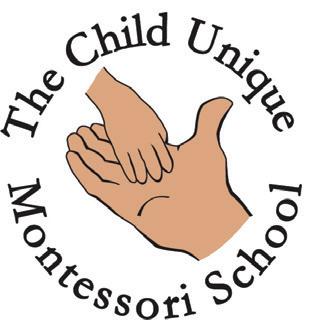











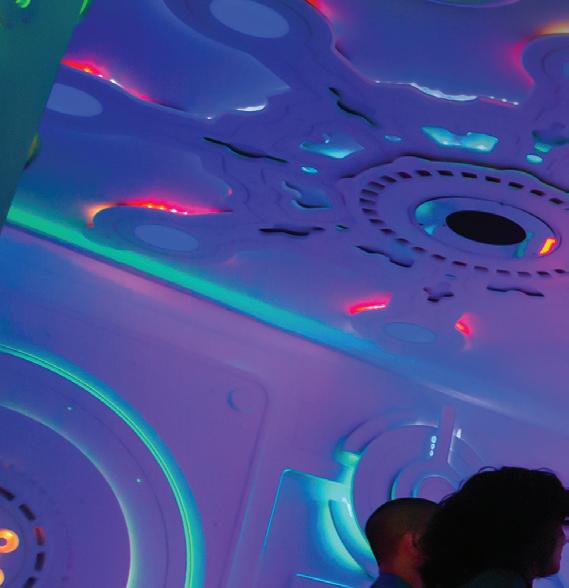


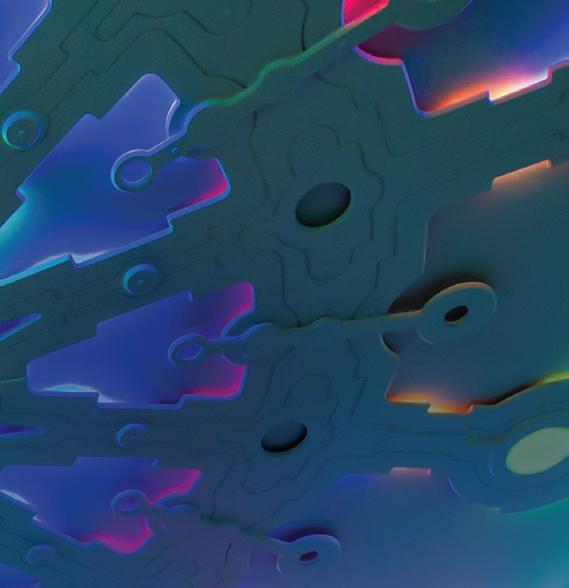





Yes, summer in Las Vegas is hot. Very hot. Sometimes super hot. Yet there are reasons why a short, zippy trip in July or August can be a fun choice. Hear me out.
Since, in fact, Vegas summers are always really hot, the city is set up for it. Some fun things to do when it isn’t hot will not be on the table, i.e., anything outdoors. I’d save the excursion to Red Rock Canyon for the next visit. But even if dashing from
By Janis Hashe
air conditioning to air conditioning is mandatory, the crowds of tourists will be much diminished. Hotel deals and lower entrance fees abound.
Although the big hotel/casinos o er low rates, I prefer staying o the Strip at the remodeled, mid-century-modern Downtowner. Close to everything and just groovy. downtownerlv.com
Choices in Vegas are endless, but an amazing number of outstanding restaurants are in unassuming strip malls. My favorites include Aroma Latin American Cocina (actually in Henderson, but easily accessible), a small, lovely dining room with outstanding food for both carnivores and non-carnivores. Yums to the Peruvian ceviche and the white chocolate roasted
corn. Reservations recommended. aromacocinalv.com
Izakayas, Japanese restaurants that serve the equivalent of tapas, are very popular in Vegas, partly because many stay open until 2am. The tale is that they were invented so Japanese businessmen could eat while indulging in various forms of liquor. In any case, the well-known ones usually have a wait list. I like IT’s Izakaya, again o the beaten track in a strip mall. Welcoming sta , tasty bits such as spicy poke crispy bites and blue crab meat sushi tacos, and honey toast. Each table has a buzzer to alert the waitsta . its-izakaya.cuba-cafe.com
For a special dinner, superb, personal service and stylish atmosphere, chef Brian Howard’s award-winning Sparrow + Wolf is the place. The menu, kept simple, features items such as Castelvetrano olives with smoked butter, yuzu and marcona almond; dry-aged “madai” sea bream; and occasional o erings such as a 32-ounce almondsmoked porterhouse steak aged in white miso.The four-course chef’s tasting menu is a bargain at $135, and the clever, original cocktails are delightful. sparrowandwolflv.com
Vegas is the world capital of tiki bars. My recommendations include low-key (and a bit smokey, but not awful) Frankie’s Tiki Room, frankiestikiroom.com; the hilariously kitschy Tiki Di Amore (located behind Italian restaurant Casa Di Amore), tikidiamore.com; and the most fabulous tiki bar I have ever been in—which is saying something—The Golden Tiki, thegoldentiki. com. It’s open 24 hours, but I prepare to stand in line to get in if going at a “normal” time.
Omega Mart. From June 21-Aug. 9, on select days, this impossible-to-describe surreal supermarket/art installation will brim with Phenomenomaly, an immersive performance in which explorers “are invited to witness the mysterious migration of an interdimensionaltraversing, bioluminescent creature known as the Flickerwerm.” It features a cast of dancers, clowns, puppeteers and a
featured weekly act showcasing a variety of local talent. meowwolf.com/visit/las-vegas Mob Museum. Vegas’ mob history can’t be hidden, and the Mob Museum doesn’t try. But it doesn’t celebrate it either—its full name is “The National Museum of Organized Crime & Law Enforcement.” Four floors contain artifacts like Bugsy Seigel’s sunglasses, and a valise with hidden flasks for hooch. Interactive exhibits include the forensic Crime Lab, and on the lighter side, the Speakeasy & Distillery. themobmuseum.org
Arts District. The flourishing downtown Arts District is an entertaining, walkable area with many restaurants, clubs and fun retailers, such as gallery/store Recycled Propaganda and vintage/new clothier For the Love LV, both on Main Street. I enjoy just strolling the area—with stops to hydrate—and a visit to a satellite location of a famous Vegas bakery, Freed’s, on East California Avenue.
Miss Behave’s Mavericks. A wild, raucous variety show in an original Vegas showroom at the Plaza Hotel & Casino. Never the same twice—and not for the prudish. Hostess Miss Behave ensures everyone has a good time whether they like it or not. mavericksdtlv.com
Buy a couture hat. Visiting Louisa Voisine’s “hat parlor” is a trip to another time. Her gorgeous chapeaus reveal the expertise acquired from study in France with master milliners. Only open on Thursdays and by appointment. Book through lsvoisine360@gmail.com.
Artists in town summer ’25 include Lady Gaga (July 16-19, T-Mobile Arena), Beyonce (July 25-26, Allegiant Stadium) and Bruno Mars (Aug. 22Sept. 6, Park MGM), among many, many others.
Orbi: The enormous Sphere, now a Vegas landmark, is o cially named “Orbi.” It is fantastic. Checking out ever-changing Orbi as I drive around Vegas never gets old.
Southwest has multiple, less-than-90 minutes flights out of its exclusive terminal at OAK.

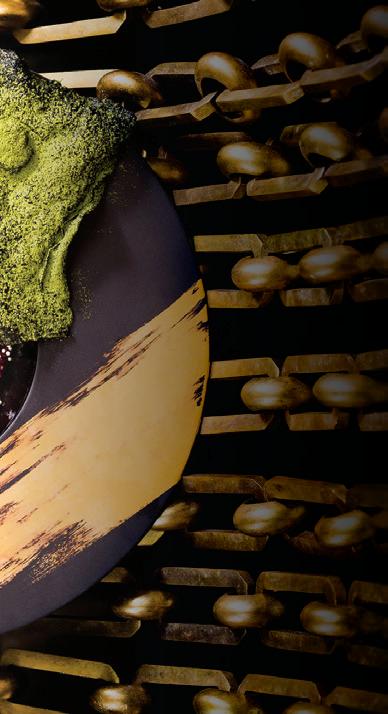








BOOK STILL LIFE For ‘Consider the Oyster MFK Fisher,’ artist Libby Black made an oyster in its shell, an oyster fork, a lemon wedge and a sprig of parsley out of paper, paint, pencil and glue.


art inspired by M.F.K. Fisher and baked goods in Mill Valley
BY Jeffrey Edalatpour
The artists in Anthony Meier’s group show, “Consider the Oyster,” are united, not by their relationship to mollusks, but by a more ephemeral relationship to M.F.K. Fisher’s short book of the same name.
Throughout the work, published in 1941, Fisher writes lyrically about oyster facts and folklore, from the mollusk’s lifespan to its place in our collective and culinary imagination. She also includes several recipes and reminiscences about the various
preparations of dishes she’s enjoyed in which oysters are the star ingredient. With the exception of Libby Black’s entry—a sculptural facsimile of the book itself—visitors to the gallery will have to make their own mental leaps to connect any actual or suspected dots between the works of art and Fisher’s prose. Carol Bove’s untitled sand dollar (2009), bleached white by the sun or by some other mysterious alchemical process, faces the viewer from its perch on a small brass stand. Because of its scale amongst
the larger paintings and mixed media work, it takes on the appearance of a gift store knickknack, denuded of its imperfections.
When sand dollars, up from the depths, land on the shoreline, they’re rarely alive, and their skeletons are often broken and mottled gray. Bove’s antiseptic version of the echinoderm—not a mollusk—also suggests something antithetical to my understanding of Fisher’s work. And, apart from an oil painting, it emphasizes the underrepresentation of all things oceanic in the gallery.
The idea for “Consider the Oyster” comes from a love and admiration for Fisher’s oeuvre. But food, Fisher’s essential subject, isn’t part of the curatorial approach. As it fits into the rest of her bibliography, Consider the Oyster takes cooking and the ensuing meals as a point of departure for self-reflection and cultural or sociological commentary.
In that spirit, Soumya Netrabile’s Pink Sand Beach (2025) is a dreamy psychological seascape with a colliding sense of perspective. We see the elements of a beach half-remembered and painted as a blurred collage. It’s easier to accept the presence of other works by Emma Amos, Yayoi Kusama and Ruth Asawa without having to apply Fisher and her oysters as the guiding principles.
Black admits that her contributions, Consider the Oyster MFK Fisher and The Alice B. Toklas Cookbook, come from a more literal approach. “I remake things to slow people down and to really understand the world that I live in,” she explained. Her “books” are an endearing meeting place between sculpture and paintings. Black makes them by hand out of paper, paint, pencil and glue. She also created tiny, beautiful origamiesque figures that pop up on top of the books like objects in a diorama.
For the Fisher book, Black made an oyster in its shell, an oyster fork, a lemon wedge and a sprig of parsley. “It’s kind of like a still life but also bringing the book more to life, more than just judging a book by its cover,” she said. To make them, Black uses Strathmore paper, which she describes as being thinner than cardboard. The books are hot-glued together and hollow inside. “Then I coat it with acrylic paint,” she explained. “I’ve been doing this for over 25 years, and they’re not going to fall apart.”
After considering the oyster, the sand

dollar and the beach, I took a short walk down to the Madrona cafe and bakery. I’d read about it to prepare for my lunchtime jaunt to Mill Valley, then forgot the name. When I asked at the gallery for directions to a nearby bakery, the curator knew exactly which one I had in mind. “Madrona,” she exclaimed.
The cafe is, in fact, on Madrona Street, a quiet side street just outside the center of town. Inside, the barnyard-chic aesthetic is grounded by a warm French blue paint paired with white honeycomb tiles affixed to the front of the kitchen wall. The baked goods are equal to the ones made by their East Bay confreres (though Fournée, with its lamination expertise, is the closest counterpart).
I didn’t content myself with a single item. I ordered, and later devoured, a vegetarian sandwich that smashed chickpeas into something remarkably close to egg salad. It was creamy and filled with a crunchy, unidentifiable vegetable that was probably celery. The slice of focaccia, made with onions embedded in the crust, was slightly charred and crispy on the outside and delectable on the inside. A lemon scone conjured a Proustian memory of scones I used to eat at a now defunct bakery. On a single day trip to Mill Valley this summer, it’s possible to consider the solitary oyster and the companionable scone.
‘Consider the Oyster’ at Anthony Meier through Aug. 8. 21 Throckmorton Ave, Mill Valley. 415.351.1400. anthonymeier.com. Madrona Bakery, 17 Madrona St., Mill Valley. Open Thu to Mon 8am-3pm. 415.915.9120. madronabakery.com.










‘Dolores’ pays tribute to an icon
BY Janis Hashe
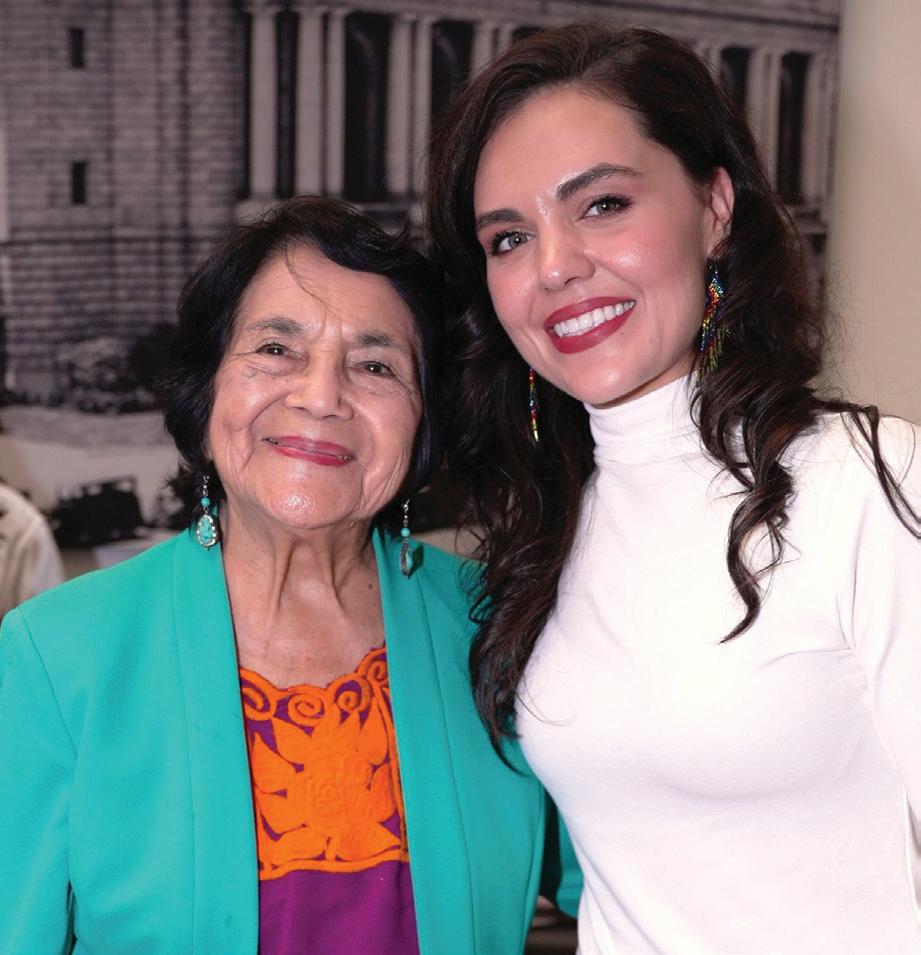
At 95, Dolores Huerta could rest on her laurels with no reproaches. Labor leader, tireless fighter for immigrant rights and civil rights, as well as feminist, Huerta has continued her work for decades.
But, said Nicolás Lell Benavides, composer of the new opera, Dolores, Huerta knows there is always more to do. The fight for justice is ongoing. And
even when a life-altering tragedy occurs, Huerta does not give up, but finds a way to persevere.
That is one of the main themes of Dolores, having its world premiere with West Edge Opera in Oakland this August. Knowing there was no way to fully depict such a life as Huerta’s, Benavides, who is her third cousin, and librettist Marella Martin Koch chose to focus on one pivotal episode, its prequel and its sequel,
that epitomizes Huerta’s courage: the assassination of Robert Kennedy, a major ally.
“Dolores as a person is so monumental,” said Benavides.”But there are people who know little or nothing about her. The opera doesn’t work unless you care about her.” Thus, he said, he and Koch picked the time when she lost one of her greatest supporters as the opera’s setting.
Koch said they focused “on who she is becoming over the series of events she endured in 1968.” Huerta had spent months canvassing for RFK. She was present at the Ambassador Hotel on June 6, when his primary victory party turned into an American tragedy. “[Fellow farm labor leader] César Chavez was just recovering from his fast, and [fellow organizer] Larry Itliong had left the party early,” she noted. “But she was right there, facing an unimaginable loss.”
She added, “There are relatively few women in acknowledged leadership roles. But she was named by RFK … she intersected with so many movements going on at the time.” Unlike powerful women in other operas—Violetta, Susanna, Angelica, Carmen—“Dolores’ love is not a romantic love. It’s about the wholeness of the human family.”
East Bay Magazine has been following the opera’s journey since it was chosen by WEO through its “Aperture” development project, which ran from 2020-2022 when live performance was not possible. (See eastbaymag.com/si-ellapuede.) “We created an online platform to fund, develop and commission new works—a milestone, not just for us but for the process of making new opera. Dolores was the first winner of the program. In 2027, we will have Claude and Marcel, the second winner,” said WEO’s general director, Mark Streshinsky.
“There was a lot of positive energy around us throughout the process,” said Koch. “The first draft [of the libretto] was much too short,” but WEO curators had faith she would find a way to align the characters with their emotional truth and honor the history. “We were creating a piece about someone who is real and who means a great deal to many people,” she added.
“We both felt [Dolores] would happen one day,” said Benavides, “but we

were floored [when it was chosen by Aperture] … there is a lot of trust involved in a commission.”
Koch and Benavides saluted their collaborators in the years-long process, including mezzo-soprano Kelly Guerra, who plays Dolores, music director Mary Chun, and, more recently, director Octavio Cardenas. “Mary comes from a San Gabriel family and knows the world of itinerant farm workers,” said Benavides.
In composing and evolving the music, he hears the singers’ voices. “With music, we can do all the inflections,” he said.
Speaking of the music, “I can smell the dirt and see the grapes,” said Koch.
With a new project, the evolution continues. For example, at one point, Koch and Benavides cut back the role of RFK, because the opera is not primarily about him. “It’s all about balance … we recently added a new intro,” Benavides said. Dolores is already slated for 2025 productions at San Diego Opera, BroadStage and Opera Southwest.
Asked about the timeliness of this piece, Koch said, “I feel like people connect to [her] struggles. My hope is that people will be inspired no matter what side of the dialogue they’re on. Dolores doesn’t think of just herself. She is part of a massive eco-system.”
And asked the same question, Benavides responded, “I don’t know if it’s more relevant right now. History is so cyclical.” But, he said, Huerta is an
inspiration to “take up the mantle of civil rights leaders to protect and fight.”
Streshinsky spoke about the production design. He explained, “The concept was inspired by the strike picket line. Slogans and chants are a big part of the opera, and we wanted that reflected in the design. Also important is the propaganda against the movement, so we wanted to create a design where that duality was represented.”
He added, “One of the reasons I wanted to do the opera is that right after my parents got married in 1966, my father, who was a photojournalist, flew to Delano with my mom to cover the grape strike. They got to know both César and Dolores. Dad’s photos were used in the John Dunne book, Delano. I grew up hearing about these people and how impressed my parents were with them. The photos are archived at the Bancroft Library at Cal Berkeley, and we have chosen many of them to be projected during the production.”
“In the end,” said Streshinsky, “bringing Dolores Huerta’s activism to life on the grand scale that only opera can do will be an experience that will resonate in the history of West Edge Opera. It shows that we can create pieces that speak to our time. The energy around the opera is electric.”
‘Dolores,’ Aug. 2 and Aug. 8 at 2pm; Aug. 16 at 8pm, West Edge Opera, Oakland Scottish Rite Center, 1547 Lakeside Dr.; westedgeopera.org.



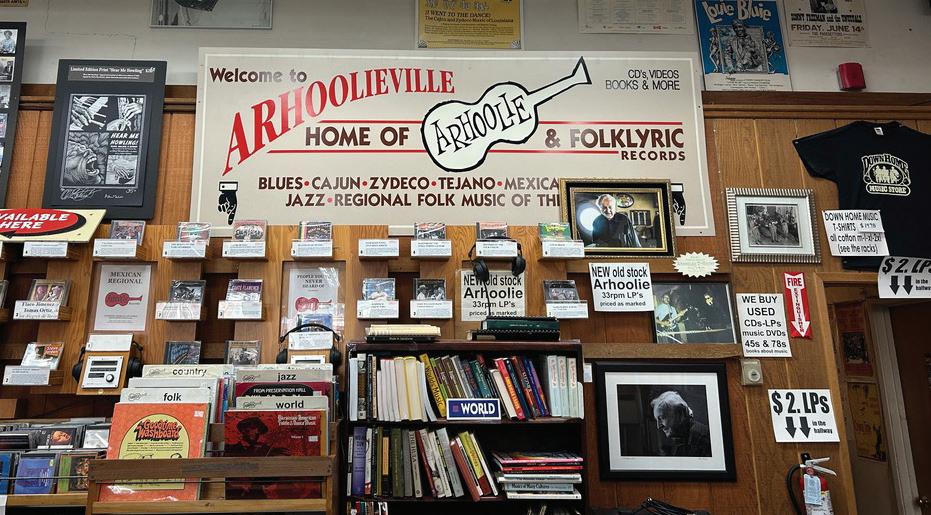

After close call, a trio of vibrant arts organizations has raised enough money to keep their historical building
BY Jessica Blough
BY

The walls of 10341 San Pablo Ave. in El Cerrito are coated in decades of music history. Nearly 50 years ago, musician and archivist Chris Strachwitz bought the modest building and began filling it. He had spent decades recording musicians across the U.S. creating songs specific to their culture and traditions: tejano, zydeco, cajun, blues. At the front of his new building, he opened a record store, selling primarily his collection of roots music, but later jazz, country, folk, zydeco, cajun, gospel and more.
Strachwitz invited his friend, Les Blank, to set up a film studio in an empty office upstairs, and they became frequent collaborators. The annexed back of the building, invisible from the outside but massive on the inside, became Strachwitz’s workspace for his burgeoning record label, Arhoolie Records.
“There was a lot of love in them, for their subjects and their collaborators and the people they documented and
the culture that they documented,” said Clarke Noone, an archivist who worked with Strachwitz in the final years of his life. “That animates how we are entering this next chapter.”
For decades, the store, the film studio and the record label existed in harmony, paying cheap rent to Strachwitz and attracting fans from around the world. The store would sell the label’s music, and conversations with musicians would spin off into documentaries. Strachwitz sold Arhoolie Records to the Smithsonian in 2016, but he formed the Arhoolie Foundation to document and celebrate roots music, often collaborating with Les Blank Films. The foundation hired Noone in 2022 to catalog Strachwitz’s life and work.
But Strachwitz died in May 2023, leaving the building on San Pablo Avenue to his extended family and the future of its shared tenants in flux. The record store, film nonprofit and music foundation worried about how they would afford to pay rising rents if the
building was sold to a new landlord. They worried, too, about preserving the decades of memories on the walls.
In the record store, the walls are collaged with tour posters and LP covers. And in the archiving area, CDs are stacked in neat shelves, and rows of 78s are piled, alphabetized and carefully tucked into shelves behind thin silver chains, which protect them from tumbling to the ground during an earthquake. Upstairs, the walls of Les Blank’s former studio are tacked with postcards and photos, leaving almost no white space. Oddities from his movies—a toy car puppet dangling from the ceiling, a shoe encased in resin—create a sense of inspired chaos.
“The synergy of all the organizations working together, that would be impossible to recreate, I think,” Noone said. “If that breaks, it’s like glass. You can’t put that back together.”
After months of negotiations, the building’s tenants struck a deal with its new owners to purchase 10341 »
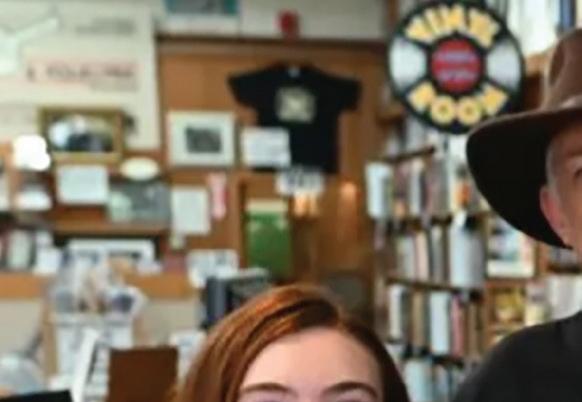
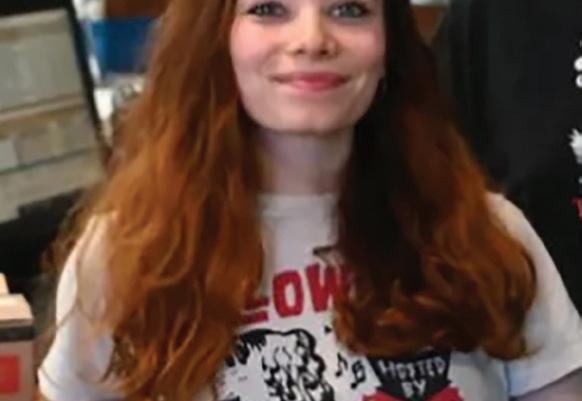







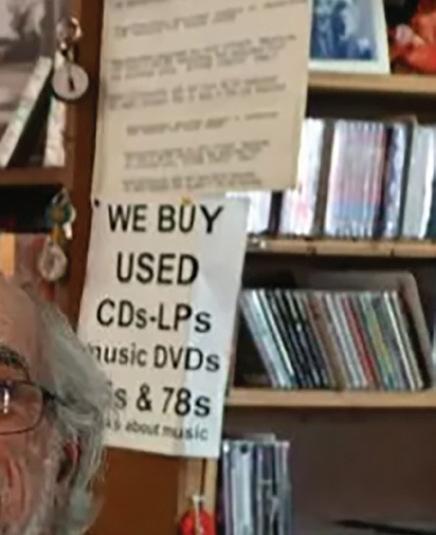


«
San Pablo Ave. Harrod Blank, Les Blank’s son, who took over Les Blank Films after his father died, put a down payment on the building in November 2024. By April, Blank had to raise more than $2 million to fulfill the market-rate purchase agreement.
With the help of donors, the three organizations succeeded in keeping their space, Blank said. Much of the funding came from one individual, though Blank declined to give that person’s name or the amount they contributed. “I almost fell on the floor,” he noted.
The Arhoolie Foundation and Les Blank Films are now co-owners of the building, with Down Home Music as a tenant. But much of Down Home Music’s inventory was left to Strachwitz’s heirs. After it was appraised for an “astronomical value,” according to Blank, the store is still in the process of deciding whether to purchase it back.
A GoFundMe set up by Blank raised $67,000 to be split between the Arhoolie Foundation, Les Blank Films and Down Home Music. Some of that will go toward purchasing new inventory for the store, and Down Home will ask for donations as well.
‘The synergy of all the organizations working together, that would be impossible to recreate, I think. If that breaks, it’s like glass. You can’t put that back together.’
CLARKE NOONE
But Blank and Noone, along with Down Home Music co-manager JC Garrett and Arhoolie Foundation executive director Adam Machado, have an ambitious vision for remaking the entire space. Noone and Blank wanted to keep the three organizations together to preserve the legacies of Strachwitz and Les Blank, and the culture of collaboration they modeled in their work. Now, they are hoping to extend that out to the community that supported them in their time of need.
“It’s clear for all three of us that we wanna be together, so it’s sort of a
marriage of the three entities,” Harrod Blank said. “And we are going up our game, we all agree.”
Blank recalled his first meaningful memories of the building, when he was in his 20s and making a documentary on art cars called Wild Wheels
“Chris would work late till about three in the morning doing the Arhoolie stu , and then I would keep working until sunrise,” Blank said. “I did that for two years, so I grew up in that building, and I watched how much good work was created in that building and what it represents culturally. It’s a triumvirate of these entities that do so much.”























«
Each of the three entities has a vision. Noone, with the Arhoolie Foundation, wants to create more educational opportunities around the practice of archiving. Noone, Machado and Blank also want to convert a segment of Strachwitz’s former property into a space where an artist or performer could live and work in collaboration with the foundation and film studio.
Though the record store’s inventory is still in flux, the art that adorns its walls belongs to Down Home Music. A 2018 exhibit in the San Francisco Airport highlighted the work of Arhoolie and Down Home Music, and one of the SFO curators recreated the exhibit on the store’s walls.
“The people that work here, they are all like docents of this museum,” Blank said. “You can ask them any question you want about the music that’s in that store, and they know all the answers.”
But Garrett, Down Home Music’s co-manager, wants more for the space.
“I don’t want to be just a museum, a collection of oddities,” Garrett said. “I’d like to have it be more vibrant and living.”
The building’s tenants agreed that the
‘The people that work here, they are all like docents of this museum. You can ask them any question you want about the music that’s in that store, and they know all the answers.’
— HARROD BLANK
Down Home Music space needs more room for performers and live events, so they plan to reorganize the store space. Long term, Garrett wants to invite a rotating crew of vinyl collectors or sellers to the space. He is inspired by Crossroads Music in Portland, where 35 collectors hawk their merchandise in a shared space.
Blank wants to string lights up in Down Home Music’s parking lot and screen films on the building’s blank walls, setting up food trucks and chairs in the parking lot for impromptu festivals. The area is primed for it, Machado said.
“There’s a little bit of a corridor kind of opening up where our building is, across the street,” Machado said, pointing to pop-up music events at nearby businesses Banter Wine Bar and Little Hill Lounge. “There’s a little bit of a buzz happening. As we tell people that we’re gonna add another piece to that, there’s just excitement already there in the air.”
“Just getting a building was step one. We’re now on step two,” Blank said. “We have a long way to go, but we have the security that we now control our destinies in it.” ❤





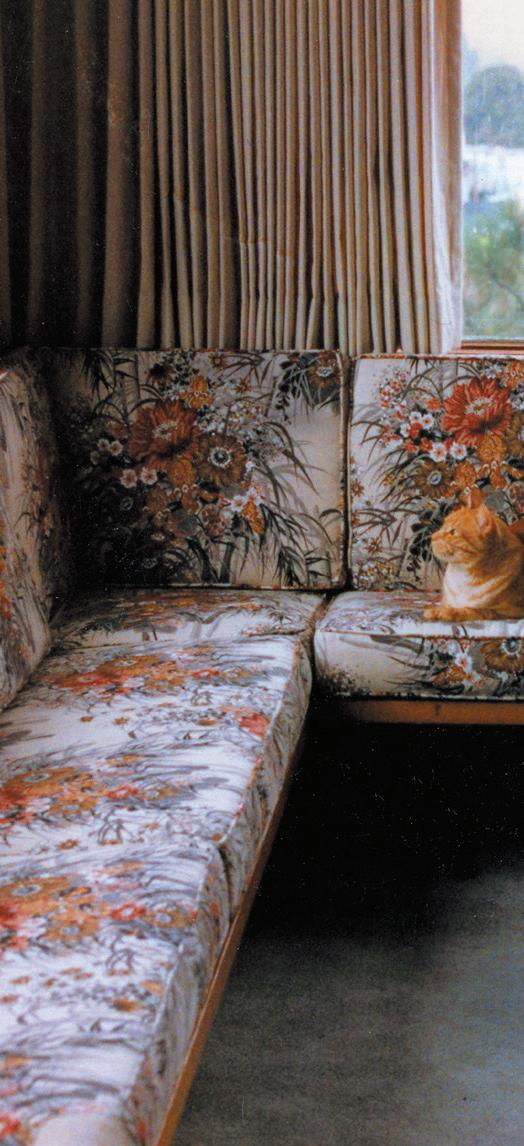







Celebrated Oakland artist Fantastic Negrito explores fatherhood, truth and healing
BY Lou Fancher



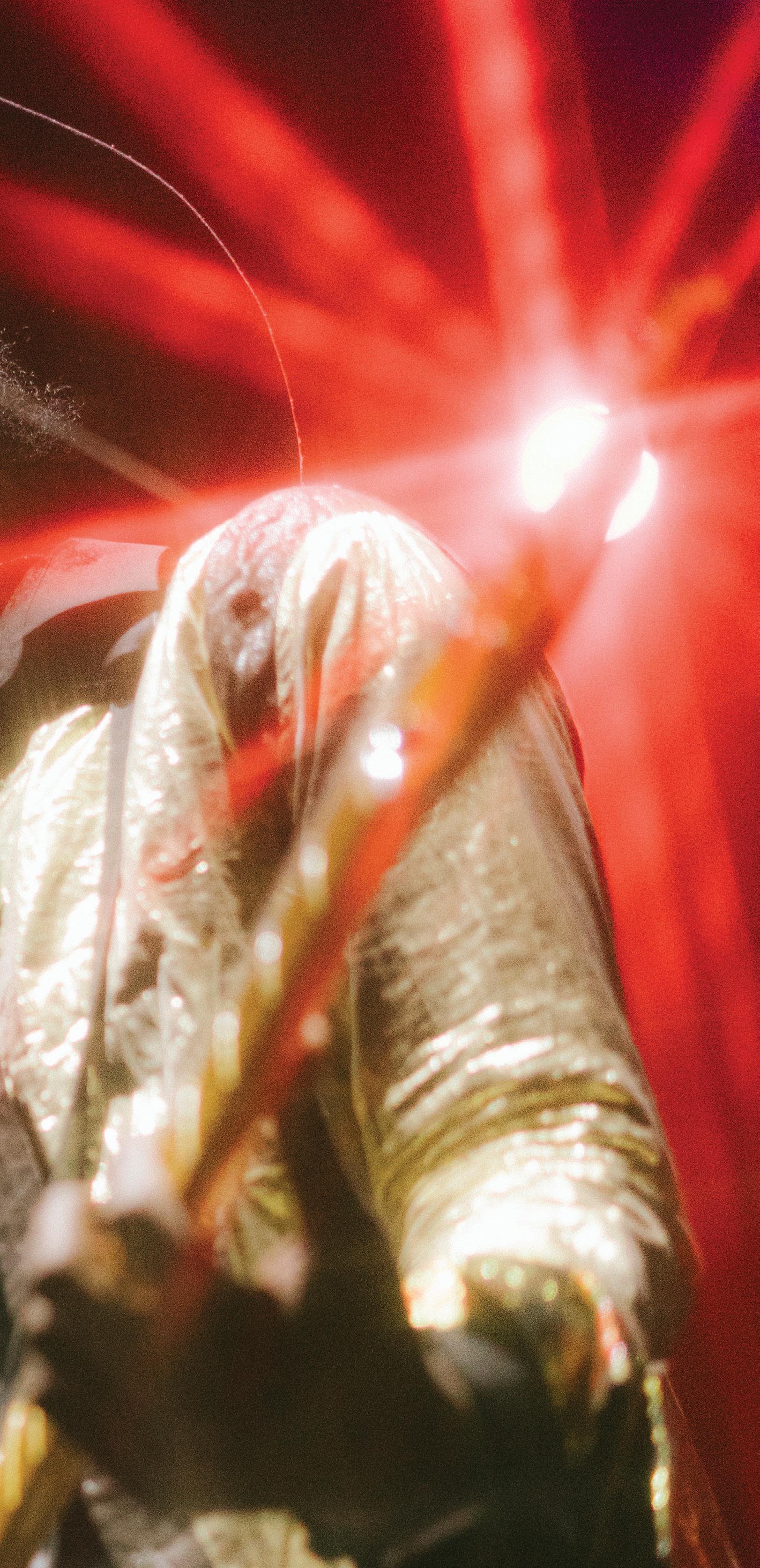
Three-time Grammy Award winning singer-songwriter Fantastic Negrito is rarely hesitant to travel. Since winning the first-ever NPR Tiny Desk Contest from among 7,000 entrants with a one-take video in 2015, the musician—born Xavier Amin Dphrepaulezz—has taken his masterful guitar playing and raw-to-silky voice to more than 43 countries.
Nor is Dphrepaulezz fearful about taking on fresh challenges. Headlining major shows and festivals worldwide and in the Bay Area, the self-taught Oakland-based artist has collaborated or appeared with big-name peers such as Bruce Springsteen, Elton John, Sting, Tank, Sam Smith and more.
Dphrepaulezz (pronounced dee-FREPah-lez), born in Western Massachusetts and the eighth of 15 children in an Orthodox Muslim family, famously survived a near-fatal car crash that destroyed his playing hand. Overcoming that physical and mental trauma and pumping energy into creativity, he has issued seven albums; become a father; founded Revolution Plantation, an urban farm aimed at youth education and empowerment; and established his own label, Storefront Records, which signed its first artist other than Dphrepaulezz in March of this year.
About to embark on a four-month tour with his latest album, Son of a Broken Man, Dphrepaulezz has an itinerary that features him bouncing between gigs worldwide.
Even so, the journey he took in 2023 into the history of his fraught father-son














relationship with his dad, a Somalian man born in 1905 who died in 1992, filled him with trepidation and proved arduous. Said Dphrepaulezz in an interview in April, “The album is the oldest story in the world: the struggle between a father and son, and the complexity in that relationship. That was extremely difficult to confront, but once it caught fire, it was better.”
He recalled that truth and discoveries made about himself and his father unfolded in astonishing sequences and forms. “One of the strangest things is my dad just invented our last name. Most people aren’t aware of that because I haven’t spoken about it at length. I discovered it while diving deep into trying to have a relationship to him long after he had died,” he noted. “I asked
myself why someone would make up a name that had almost every letter in the alphabet, mostly consonants, and a name people couldn’t pronounce? It was earthshattering to me.”
With time spent in contemplation, he realized this man born in the early 20th century and age 63 when Dphrepaulezz was born—his mother was 30—was “a Black man who happened to be brilliant, creative, radical—and also abusive, horrible and negligent.”
Dphrepaulezz remembered being accused of emphasizing his father’s best qualities and mischaracterizing him as a hero. “Let’s state for the record he was horrible. But it’s not true that people are one thing. We are many things. It’s dismissive to say someone is only horrible or abusive. I like the question, ‘Why?’ Why are horrible people the way they are? And for him to be exceptionally intelligent? For a Black man in 1905, that could be a death sentence,” he pointed out.
Learning his father’s history has led to forgiveness and some answers to the haunting “whys.” The made-up name was a form of passive resistance, a difficult-topronounce cluster of syllables that baffled the world and especially white people in power.
“Who is this Dphrepaulezz? Is he someone special, and I should treat him differently? The deception was a tool to navigate difficult, racist terrain,” he said. “We use words now, like racism, but I don’t think any of us can imagine what it was like at that time. He invented the kind of grand, quintessential American story made up by immigrants like him that came to this country. Stories for deception, for survival. Even now, we’re swimming in a modernity where deception is prevalent.”
There is no sway given to deception in telling his life story in conversation and in his portfolio of albums. Son of a Broken Man, released in October 2024, follows 2022’s acoustic re-recording of “White Jesus Black Problems,” which delved into racism and told the story of his grandparents, an interracial couple who lived in Virginia in the 1950s.
The new album’s 11-track song cycle veers from intensely personal songs that pierce the heart with vulnerability and
Learning his father’s history has led to forgiveness and some answers to the haunting ‘whys.’ The made-up name was a form of passive resistance, a di cultto-pronounce cluster of syllables that ba ed the world and especially white people in power.
longing. Lyrics sometimes pour forth like tears wrung from a wet towel. Referring to times when he “felt sick, had a broken heart/Wandered in the dark,” and worse, the layers of trauma and yearning on other tracks grind against each other, sparking flamelike words that seem to simultaneously burn and purify his psyche.
The album is flooded with gritty funk, but also gorgeous ballads, as well as hints of Latin percussion, East Indian tuning, blues grooves and music that can only have risen from his ancestral roots in the Deep South. Dphrepaulezz’s surprising and high-spirited take on a gospel standard, “This Little Light of Mine,” adds a bit of church and is nothing short of brilliant.
“Let’s look at the word truth,” he said, about the album’s content. “Boy, isn’t that in jeopardy and quickly fading in our modern era? I think it’s a lifetime journey, to find true self. I make music that’s a coping mechanism based on trying to recover. My situation: rejected at age 12 by my parents, living on the streets until I was taken into foster care. Love was something that escaped me most of my life.
“I grew up with a great sense of loss and abandonment,” he added. “At age four, my parents told me we couldn’t talk to my first brother anymore. He disappeared, and I never saw him again. To this day, I still don’t know where he is, and I’m 57 now.”
Dphrepaulezz admitted writing lyrics is his greatest challenge as a musician, doubly so for the new album. “I’d love
to make an album where I just freestyle everything. This story, it’s complicated. I love my father, and I despise him. Now that I’m a father, I think what a horrible job he did. There was 90% that was horrible, and 10% of him that was brilliant and gave me my foundation as a man navigating this world,” he revealed.
Rarely impressed by his own lyrics, he worked hard to craft a story in ways “where there’s resolve and a solution,” he said. “With ‘I Hope Somebody’s Loving You,’ I struggled with that song for years. ‘Devil in My Pocket,’ I thought, what is that really about? Maybe fatalism? Maybe there’s not much new, and we’re a little too impressed with ourselves?
“People connect with it when they hear it live, big time. Because it’s accusatory maybe? I may not know for 20 years what it is. That’s a heavy song. Maybe it’s just the fu**ing challenge of being a human being. We’re brilliant and we’re disgusting. We cured polio, and then we committed the Holocaust, the Atlantic slave trade. We created modern medicine and food, but some of it can give you cancer. I don’t know anything … but I’m curious,” he continued.
Curiosity and a desire to produce music independently led to Storefront Records and Everything Velvet, the label’s first signed artist other than Dphrepaulezz. During a recording session, a sound engineer, in response to his request to hear a female singer take his place, dubbed in a then-unknown-to-him voice. “It had texture, character, feeling, honesty, cadence, delivery,” he recalled. “I was completely blown away.”

Dephrepaulezz said it “took years to cultivate the tools” to run a label and prepare to produce the work of other artists. Pursuing an organic process and applying an anticipatory “wait and see what happens” mindset, his goal is to avoid “formulaic, cookie-cutter music, not punk-ish, formless music.”
In the studio and (literally) outside its four walls, two most beloved projects include Revolution Plantation, aimed mostly at youths, and events he calls “mixers,” during which invited groups of no more than 30 adults gather for conversation.
The urban farming Revolution Plantation program immerses young people in hands-on agriculture and

taps his Southern roots with lessons in wisdom learned from his grandmother.
“She was the only person I felt truly loved by, aside from my partner and children now,” said Dephrepaulezz. “She wasn’t well-read, but she had a rich life philosophy. When I was filming her one time, I asked her to talk to me about segregation. She said she didn’t have many problems with white folks. That made me sit up.
“She said, ‘We had our own farm. The neighbors had goats and cows, and others had chickens.’ She was talking about a collective. I thought, wow, this is the most revolutionary sh**. Here, in southern
rural Virginia and a town of only 600, my grandmother, this frail woman, was telling me about empowerment and selfdetermination,” he added.
People, he believes, are exactly like plants. “If you give them light, love, space, good food, good water, plants will provide you with power over your food source. If you don’t give all of those things, with people, they’ll break into your car, rob you at grocery stores. I love that correlation,” he said. “There are so many lessons and unbelievable skills one can attain on a family farm. It’s a place to congregate and eat. It’s simple, but revolutionary.”
Arguably more complex but equally
‘Here, in southern rural Virginia and a town of only 600, my grandmother, this frail woman, was telling me about empowerment and selfdetermination.’
radical and all about community gathering, are the invitation-only mixers. People share powerful personal testimonies and hold conversations he says are vital, but infrequent.
“People are talking at each other, not to each other, especially people who disagree,” said Dephrepaulezz. “I thought, Why is this happening? The ‘why’ is more important than how terrible something is. ‘Why’ will help us. Saying (expletive) to this and throwing up your hands, that’s not gonna help us. The answers to ‘why’ will. I feel like, in my music and these activities, I was put on Earth for this purpose. This is exactly where I’m meant to be.” ❤




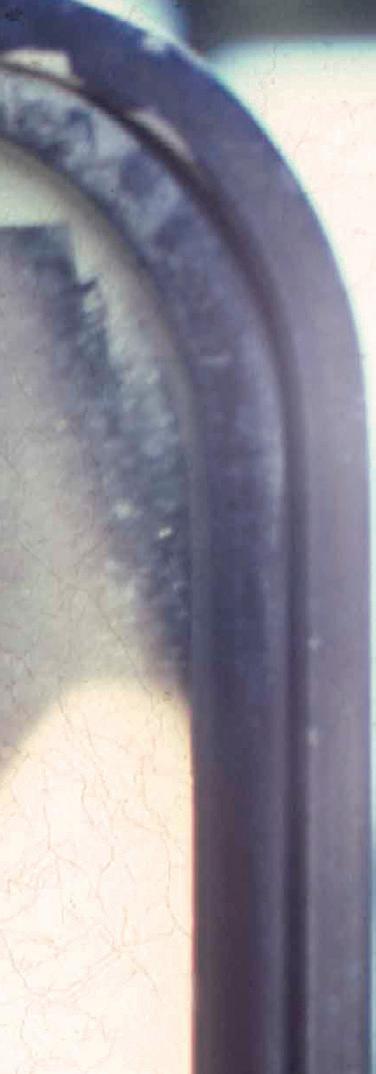














BY j. poet












Cbut I loved looking at them and editing.”
layton Call was capturing musicians on film long before he became a professional photographer. “I saw every classic band between ’66 and ’76, without taking a photo,” he said. “My mom bought a new Pentax in the fall of ’75. I borrowed it and took it to a Todd Rundgren concert, to take color slides. When I got them back, I put on a Todd album and projected the slides on the wall. I was hooked. I never really enjoyed the process of taking photos, but I loved looking at them and editing.”
In the ’80s and ’90s, Call’s photos appeared almost every week in the review pages of the East Bay Express. “In 1981, I showed one of the Express editors a few pictures, and they took a chance,” Call said. “Until then, I only shot occasionally, and for fun. When I got published, things got real. My hobby became a job. The Express was key to building my photo archives. The huge range of artists they assigned me to shoot helped, and the exposure to jazz legends, close up, expanded my musical and drumming horizons.”
In all, Call shot 256 shows for the Express over the next 16 years. “I also started shooting for other local papers, BAM and the [San Francisco] Bay Guardian,” he recalled. “Eventually, I hooked up with Guitar Player magazine. Being a musician myself, I would shoot the drummer, the guitar player and the equipment as well.”
Call grew up in a small Long Island town, just outside of New York City. His family loved music: lots of Sinatra, Nat King Cole, Judy Garland, Julie London, all the Broadway show albums.
“AM radio was great back then. My first concert was The Byrds and Young Rascals at 11 years old, in 1966. I’d also become obsessed with drumming. I got a pair of sticks after seeing Ringo on the Ed Sullivan Show and Dino Danelli, drummer with The Rascals, at that first concert. I played on furniture until I had real drums, when I got to high school, at 15. They must have been borrowed, since I had no money to

buy drums,” Call remembered.
While in high school, Call started playing with his friends. They had a pretty eclectic song list in their first band: Allman Brothers, Grateful Dead, Procol Harum, Todd Rundgren.
“After moving to Berkeley in ’76, I started playing in bands,” Call said. “I lived in a band house and was part of a fusion project that seldom played outside of our living room. Around 1980, I started playing gigs with The Unreal Band in Berkeley bars, like The Starry Plough and Come Back Inn. I was also in a Berkeley new wave group called The Gyrations. We played clubs like Berkeley Square and The Mab.
“Even though I had cheap rent, I realized that I couldn’t count on photo income, or drumming, to come up with rent every month,” added Call. “Making music was a passion and obsession. None of us thought about making a living doing it. Photography soon became an obsession too, but materials and equipment were expensive, so making money was a necessity, but not my prime goal.”
Call’s photo business card back then read, “Music To Your Eyes.” “That’s what I wanted to transmit: the energy at the peak creative moments of an artist who’s not thinking about anything but the music,” said Call. “I never had any control over the lighting, and sometimes was told »
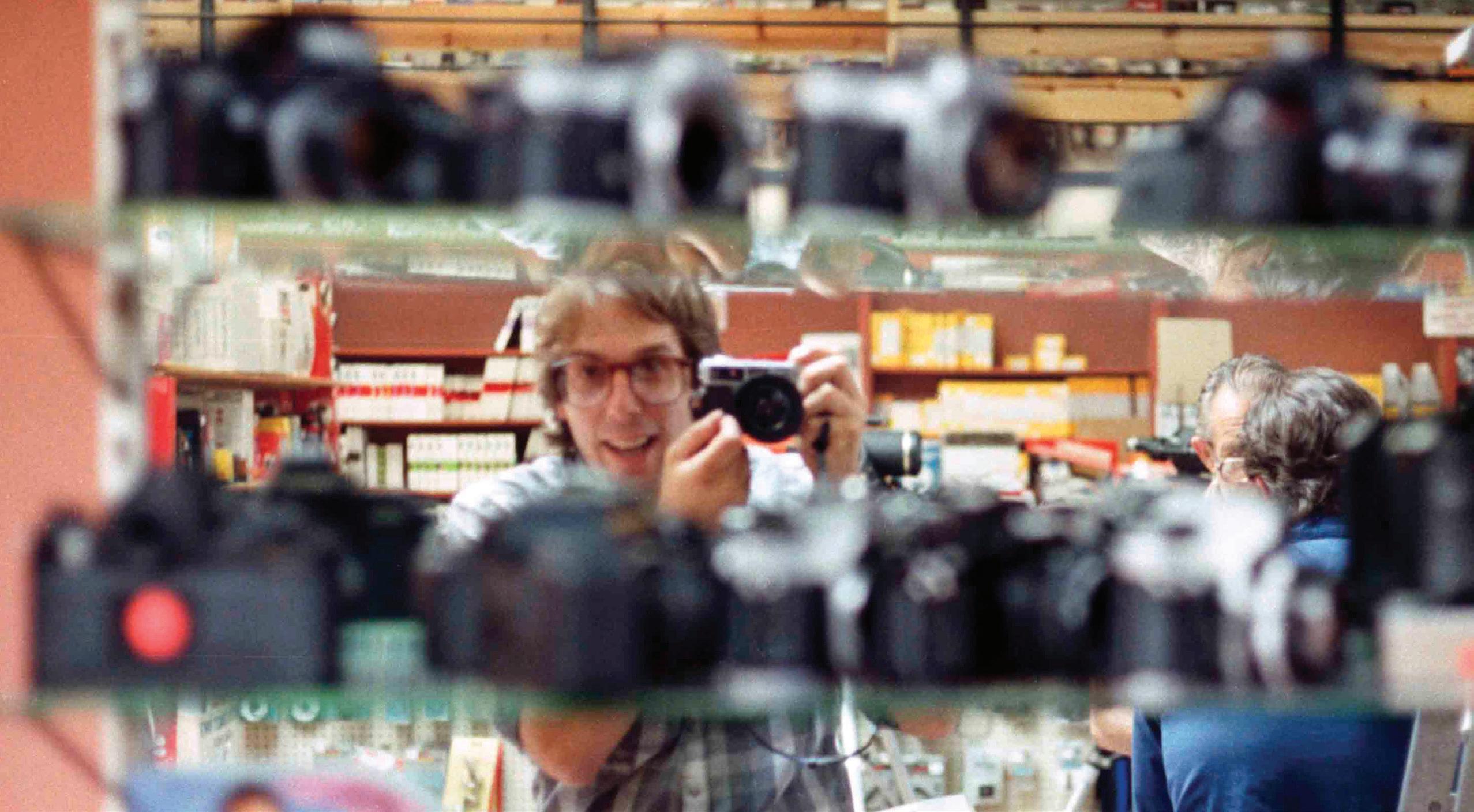
where to stand, but knowing the music, and being a drummer, meant that I could anticipate onstage moves and choose the right framing. I had good reflexes to grab an action shot, but time can go fast when you’re shooting a performance.
He acknowledged that it’s a different experience shooting Paul McCartney in a stadium with 80,000 screaming fans, or sitting at a table in Yoshi’s, sipping a cappuccino and capturing Max Roach behind his drum kit.
But he slowly lost interest in photographing rock bands. In 1990, Call started going down to New Orleans to capture images of the jazz and R&B greats who played at the annual JazzFest. “I shot for Offbeat Magazine, a local music monthly down there. As usual, it didn’t even cover my expenses, but I ended up with an archive of about 30,000 images of JazzFest,” Call noted. He is now represented worldwide by Getty Images.
Call also became interested in the audio and production end of the concert business. “I needed to hear good sound, and somebody had to do it, so I multitasked. It was all in the service of the music,” he said. “I’ve been a night person since I was young. Which is

good if you’re playing or working a show, loading out gear at 2am.
“I was a stagehand with Local 16 and had to be on call 24/7, but the pay was good, even though the hours were unpredictable,” he continued. “You might have to show up at 6am and come back at 11pm to tear down the show. There were some crazy hours, but an
incredible education to help put together events, from small clubs to stadium shows. You learn a lot.”
Call worked various day jobs over the years, preparing lighting and grip trucks for TV and movie shoots, and working in the field for IATSE Local 16 (the stagehands’ union) in San Francisco, helping set up audio for conventions at Moscone, stadium shows and Outside Lands festivals.
He also worked as a drum tech in the Bay Area, providing his skills and drums for pro drummers like Zigaboo Modeliste (The Meters, Dr. John), Bernard Purdie (Aretha Franklin, James Brown), Stanton Moore (Galactic), Nikki Glaspie (Dumpstaphunk) and more. Call videotaped many of these legends for his YouTube DrumCam page.
Since retiring from his day job, he’s been working on his archives and updating the impressive collection of photos he has on his website: Clayton Call Photography at claytoncallphoto. com. “It’s mostly an online portfolio, though I do sell a few prints now and then,” he said. “I didn’t make much money on my photos back then. It wasn’t the goal. But now I’m starting to make a little bit, 40 years later.” ❤
CROWD SOURCED Moraga Park Foundation features a variety of bands and food trucks for its volunteer-led, communityadvised ‘Summer

Our communities thrive by supporting local events
For years, organizations in Alameda, Berkeley, Oakland, Moraga and beyond have hosted free outdoor summer concerts—vibrant gatherings that foster community engagement while
BY Brooke Mohiuddin
celebrating nature, culture and local support. Whether hosted by their city or partnering organizations, these concert events are hubs for local businesses, artists and organizations to support each other, and for families and people of all ages to connect.
As a whole,
create a fun and simple way for
members and neighbors to uplift each other.
«
A standout example is Moraga’s Summer Concert Series, put on by the nonprofit Moraga Park Foundation (MPF). Utilizing public feedback forms, and a full board of volunteering members, the planning and decision-making process begins as early as October. The MPF strives to feature a variety of bands and food trucks each season, carefully considering their community’s feedback, giving something for everyone to enjoy. When it comes to improving general accessibility and pleasure at park events, this is no di erent. The MPF listens and does its best to deliver.
For this season’s lineup, a common favorite is Traveling Wilburys Revue, a touring tribute band honoring the supergroup of Harrison, Dylan, Petty, Orbison and Electric Light Orchestra. They also expect a high turnout for Moonalice, a Bay Area 10-piece psychedelic rock band and regular performer at Giants games. Other bands include the soul and funk group Big Blu Soul Revue and the beloved Fleetwood Mac tribute band, Fleetwood Macrame. It’s the Moraga Park Foundation’s job not only to book bands, but also to bring together the sponsors and local organizations making the event possible. Sponsors this year include Aegis Living, realtor Jill Balazs and the longtime-supporting Bruzzone family of
Moraga. At each weekly concert, Loard’s Ice Cream—an East Bay staple—sells ice cream, while the Kiwanis and Lions clubs o er food and drinks to collect donations for their projects. Additionally, the food trucks are brought by Taste of The World Market, a San Franciscobased food truck company devoted to bringing global cuisine straight to events like these.
Because attending the concerts is completely free, the Moraga Park Foundation collects donations at their booth every week. Donations are crucial to their pursuit of other park projects, like the recently built outdoor exercise equipment, new bathrooms and public bike maintenance resources. As a whole, park events create a fun and simple way for community members and neighbors to uplift each other.
Aside from great food and music, the concerts make for easygoing hangouts because of the flexible experience the park o ers. Without traditional seating, open grass allows everyone to spread out. One can choose their proximity to the stage, and kids can explore the facilities. At the Moraga Commons Park, with the grass hill acting as a natural amphitheater, the volleyball court, basketball court, skate park and multiple play structures allow families plenty of room. Some set up camp with picnic blankets and chairs,
while others stop by just for a quick bite, drink and hour of gathering.
By engaging in these local community events, attendees play a crucial role in helping their city thrive. At Alameda’s Summer Beats Concert Series, beer and wine sales benefit the Alameda Education Foundation. Danville’s Music at the Plaza concerts are situated in town, o ering a way for neighbors to enjoy live music while supporting local restaurants and shops in the newly renovated downtown. At Oakland’s Liberation Park, the Levitt VIBE Oakland Music Series is dedicated to showcasing diverse music genres and celebrating the cultural richness of East Oakland’s predominantly Black neighborhood.
Every event location has something special to o er, whether it’s Liberation Park’s outdoor wooden roller skating rink, Alameda’s robust South Shore shopping or Moraga’s grassy hills. We can uplift our community this summer by showing up for local events—and have fun exploring the unique experiences other cities have to o er, too.
For more info about Moraga’s ‘Summer Concert Series,’ visit moragaparks.org/ summer-concert-series; for Alameda’s ‘Summer Beats Concert Series,’ visit alamedaeducationfoundation.org/4th-of-julyfamily-festival-summer-beats-concerts; and for Oakland’s ‘Levitt VIBE Oakland Music Series,’ visit levitt.org/vibe-oakland-ca.








“You’re
• We rebuild all types of windows, and change out glass
• Deck, bridge driveway waterproofing
• Below grade foundation repair and waterproofing
• We love tile roofs
• Structural and dry rot repairs
• Waterproofing & Coatings
So-called modern clad windows start falling apart after 10 years. Restoration will save your investment. See the story on our website: www.kardelcompany.com
Clients receive an original David Lance Goines Poster
Garbageisamanufacturedproduct,created whenotherwiserecoverableresourcesare mixedandmashedtogether.Mostroomsin everybuildingin thewholecountry haveabasket wherethis manufacturing begins.Discarded resourcesareput inonebyone, thendumpedinto alargerbin,and thenintoatruck withamore modernbodybasedonthisone.A hydraulicpistonsmasheseverything together.Theobjectiveistopackinmore cargobeforethetruckhastobedrivento whereitcandumpontotheland,tobe covered ina“sanitary“way.Liquidsleach outandmaketheirwayintotheplanet's
Garbage is a manufactured product, created when otherwise recoverable resources are mixed and mashed together. Most rooms in every building in the whole country have a basket where this begins. Discarded resources are put in one by one, then dumped into a larger bin, and then into a truck with a more modern body based on this one. A hydraulic piston smashes everything together. The objective is to pack in more cargo before the truck has to be driven to where it can dump onto the land, to be in a “sanitary“ way. Liquids leach out and make their way into the planet's


water eventually. These “sanitary” methods of filling the land (hence “sanitary landfills”) also provide for anaerobic decomposition of organic materials – which makes
water—eventually.These“sanitary” methodsoffillingtheland(hence“sanitary landfills”)alsoprovideforanaerobic decompositionof organicmaterials –whichmakes methane.
Landfillsare thelargest human-created sourceof methane.Inthe shortterm methaneis 80-100times
Landfills are the largest source of methane. In the short term methane is 80-100 times
morepowerfulthancarbondioxideto warmtheplanet.
more powerful than carbon dioxide to warm the planet.
Ifyou'renotforZeroWaste, howmuchwasteareyoufor?
If you're not for Zero Waste, how much waste are you for?
NASA'sAstronomyPictureof theDayfromFebruary12, 2002,coloredthemethanein theEarth'satmospheregreen, andananimationshowedhowit spinstothepoles.NASAsaid, “Methane(CH4)issecondonly tocarbondioxide(CO2)in creatingawarminggreenhouse effect…. ThelargestabundancereleasedbytheUS…is createdwhen anaerobic bacteriabreakdowncarbon-based garbage inlandfills.” [Emphasisadded.]
NASA's Astronomy Picture of the Day from February 12, 2002, colored the methane in the Earth's atmosphere green, and an animation showed how it spins to the poles. NASA said, “Methane (CH4) is second only to carbon dioxide (CO2) in creating a warming greenhouse effect The largest abundance released by the US … is created when bacteria break down carbon-based in landfills.” [Emphasis added ]

UrbanOrehasbeensalvagingforreuseinBerkeley since1981.Wehave3acresofsecondhandgoods, open360daysayearuntil5:00PM,900MurraySt. near7thxAshby.Comeshop.
Urban Ore has been salvaging for reuse in Berkeley since 1981. We have 3 acres of secondhand goods, open 360 days a year until 5:00PM, 900 Murray St near 7th x Ashby Come shop